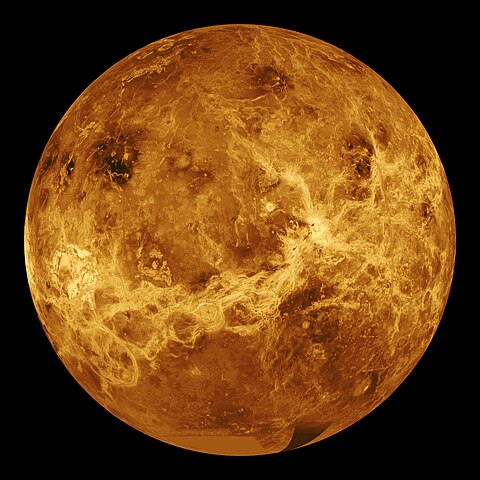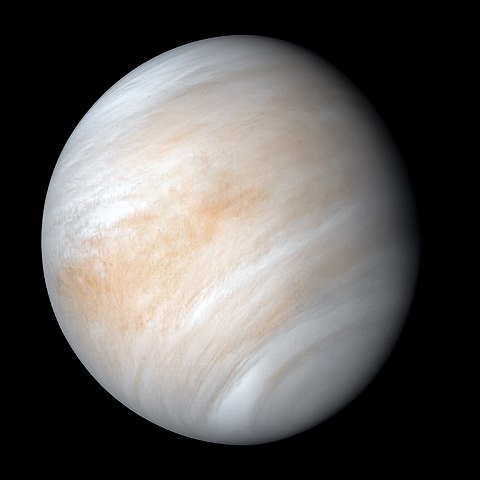
Thammasat University students who are fond of astronomy will be interested to know that the National Astronomical Research Institute of Thailand (NARIT) has announced that on Friday, 8 July, the planet Venus will be visible on Wednesday from 3:25am until dawn.
The Thammasat University Library owns a number of guidebooks and other literature about the planet Venus.
NARIT is a research institute under the Ministry of Higher Education, Science, Research and Innovation. Its main missions are to carry out, support, and promote the development of astronomy and astrophysics in Thailand through research, public outreach, and educational activities.
The Thai National Observatory (TNO) is NARIT’s main facility, atop Thailand’s highest mountain, Doi Inthanon in Doi Inthanon National Park, Chom Thong District, Chiang Mai Province. This year, NARIT has completed the construction of the Thai National Radio Telescope (TNRT), a 40m single-dish short-millimetre telescope in Huai Hong Khrai Royal Development Study Centre at Doi Saket District in Chiang Mai Province.
On 8 July, the sun will shine on a large area on Venus, making it particularly visible.
TU students may enjoy seeing it through binoculars, a telescope, or a star chart app such as Stellarium or Sky Map.
Stellarium is an open-source free-software planetarium, licensed under the terms of the GNU General Public License version 2, available for Linux, Windows, and macOS.
Sky Map is a hand-held planetarium for Android devices, used to identify stars, planets, nebulae and more. Originally developed as Google Sky Map, it has now been donated and open sourced.
In Thai astrology, Venus seen before dawn is called dao prakai phreuk, or morning star, and when seen at nightfall, dao prajam muang.
As TU students know, Venus is the second planet from the Sun. It is named after the Roman goddess of love and beauty. As the second-brightest natural object in the night sky after the Moon, Venus can cast shadows and can be, on rare occasion, visible to the naked eye in broad daylight.
Venus is sometimes called Earth’s sister planet because of their similar size, mass, closeness to the Sun, and bulk composition. It is very different from Earth in other ways. It has the densest atmosphere of the four terrestrial planets.
A terrestrial planet or rocky planet is a planet that is composed primarily of silicate rocks or metals. Venus is a rocky, like Earth. Silicate minerals are rock-forming minerals made up of silicate groups. They are the largest and most important class of minerals and make up approximately 90 percent of the Earth’s crust.
Within the Solar System, the terrestrial planets are the inner planets closest to the Sun: Mercury, Venus, Earth, and Mars. The term terrestrial planet is derived from Latin words for Earth, as these planets are Earth-like in terms of structure. These planets are located between the Sun and the asteroid belt.
The atmosphere of Venus consists of more than 96% carbon dioxide. The atmospheric pressure at the planet’s surface is 92 times that of Earth, or roughly the pressure found 900 m (3,000 ft) underwater on Earth.
Venus is by far the hottest planet in the Solar System, with a mean surface temperature of 735 K (462 °C; 863 °F), even though Mercury is closer to the Sun.
Venus is shrouded by an opaque layer of highly reflective clouds of sulfuric acid, preventing its surface from being seen from space in visible light. It may have had water oceans in the past, but these would have vaporized as the temperature rose due to a runaway greenhouse effect.
The water has probably photodissociated, and the free hydrogen has been swept into interplanetary space by the solar wind because of the lack of a planetary magnetic fie Venus’s surface is a dry desertscape interspersed with slab-like rocks and is periodically resurfaced by volcanism.
As one of the brightest objects in the sky, Venus has been a major fixture in human culture for as long as records have existed. It has been made sacred to gods of many cultures, and has been a prime inspiration for writers and poets as the morning star and evening star. Venus was the first planet to have its motions plotted across the sky, as early as the second millennium BC.
As the planet with the closest approach to Earth, Venus has been a prime target for early interplanetary exploration. It was the first planet beyond Earth visited by a spacecraft (Mariner 2 in 1962), and the first to be successfully landed on (by Venera 7 in 1970).
Venus’s thick clouds render observation of its surface impossible in visible light, and the first detailed maps did not emerge until the arrival of the Magellan orbiter in 1991. Plans have been proposed for rovers or more complex missions, but they are hindered by Venus’s hostile surface conditions.
In January 2020, astronomers reported evidence that suggests that Venus is currently volcanically active.

Other glimpses of Venus in the Kingdom
TU fans of stargazing will recall that in January 2016, it was possible to see five planets of the solar system aligned across the dawn sky over the subsequent month.
Venus, Mercury, Saturn, Mars, and Jupiter were simultaneously visible in Thailand until 20 February from dusk until sunrise.
NARIT announced that this rare astronomical phenomenon only happened once every 11 years or so, when the ecliptic plane of the orbits of the five planets lines up.
At that time, many stargazers in the Kingdom began viewing the phenomenon 45 minutes before dawn.
To further prepare for this Venus-viewing, TU students may wish to consider depictions of Venus in the arts and literature, many of which can be sampled from books in the TU Library collection.
Venus is shown to the right of a large cypress tree in Vincent van Gogh’s 1889 painting The Starry Night. The TU Library owns several books of texts by and about Van Gogh, a popular Dutch painter. Venus is a primary feature of the night sky, and so has been of remarkable importance in mythology, astrology and fiction throughout history and in different cultures.
Poets whose books are in the TU Library collection have also paid tribute to the planet Venus. They include such noted authors as Homer, Sappho, Ovid, Virgil, William Blake, Robert Frost, Alfred Lord Tennyson and William Wordsworth.

(All images courtesy of Wikimedia Commons)
